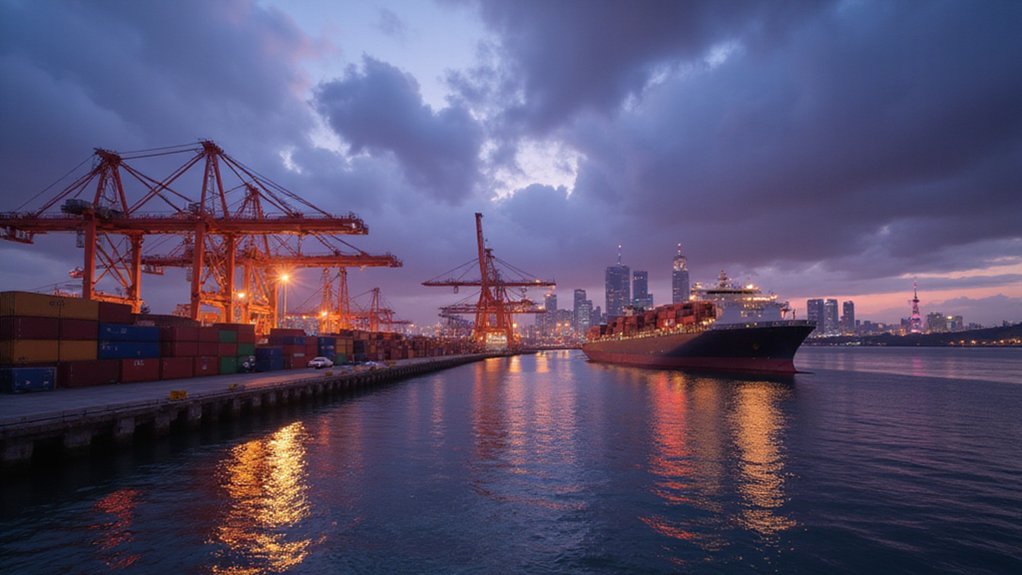While global markets reeled from escalating tensions between the world's two largest economies, China demonstrated remarkable economic resilience throughout the multi-year trade conflict with the United States. Despite facing tariffs on approximately $360 billion worth of exports, China maintained positive GDP growth, implementing strategic responses that cushioned the blow to its economy.
China weathered the economic storm of US trade tensions with strategic resilience, maintaining growth despite massive export tariffs.
The trade war, which began in 2018 under the Trump administration, progressed through several escalatory phases before reaching a partial Phase One agreement in January 2020. Throughout this period, Chinese officials executed a multi-pronged approach to mitigate damage. Currency devaluation provided immediate relief for exporters as the yuan weakened past 7 per dollar, effectively offsetting some tariff impacts.
China's retaliatory measures targeted key US sectors, particularly agriculture. American soybean farmers faced severe market disruption when China halted purchases in 2019, forcing the US government to provide billions in aid to affected farmers. Meanwhile, China diversified its supply chains by increasing agricultural imports from Brazil and Russia. The 15% tariffs imposed by China on American goods were strategically designed to target agricultural products that would create maximum political pressure on the U.S. administration.
The conflict accelerated China's existing economic transformation, with authorities doubling down on high-tech development and domestic consumption. R&D spending increased substantially as China sought technological self-sufficiency, particularly in semiconductors and advanced manufacturing. This pivot aligned with Beijing's longer-term strategy to reduce dependence on foreign technology.
Global supply chains underwent significant restructuring, with many multinational corporations shifting portions of their manufacturing operations to Vietnam, Mexico, and other lower-cost countries. However, China retained advantages in infrastructure quality, skilled labor availability, and manufacturing ecosystem completeness that limited the exodus.
The international community responded with concern, with the IMF warning that trade tensions could reduce global GDP by 0.8%. The formation of the Regional Comprehensive Economic Partnership (RCEP) in Asia strengthened China's regional trade position, potentially offsetting some US-related losses. Recent economic strategies include setting an around 5 percent growth target for 2025, providing flexibility amid external pressures.
With new tariffs announced for 2025, China appears prepared for continued economic confrontation, having developed structural adaptations that may enable it to withstand future trade restrictions more effectively than initially predicted by Western analysts.





